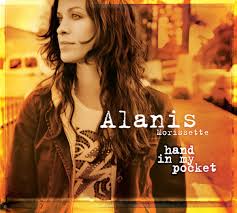For part 2, click here.
For part 3, click here.
“Do you produce enough saliva?”
That was the first interview question Ron Hruska asked me; something I will never forget.

I went to Lincoln, NE for almost a week to take a course, get treated, and observe PRI in it’s purest form.
I wanted to see Ron out of curiosity and because I cannot achieve neutrality on my own. I have done most every exercise that could be thought of and been “worked on” by my fellow comrades and a couple PRI instructors in courses; nothing could budge.
I knew I needed some type of orthotic to get somewhere; the question was which one?
Subjective Complaints
I do not have any pain really. My only complaints are a tight neck and I can’t seem to deadlift without feeling most of the effort in my back.
I don’t see this deadlifting problem as a form issue necessarily. Interning with Bill Hartman at IFAST cleaned that up, and for a long time I could feel glutes and hamstrings all day when I deadlift.

But not now.
Other “issues” I have
- Left TMJ clicks; nonpainful.
- Clench jaw at night.
- Eye strain after reading on a computer too long (duh).
By PRI standards, I am a classic PEC. I have no pathology anywhere, but I am limited in almost every motion. I knew this and so did Ron.
Objective Exam
First Ron had me walk and was pointing out some things to my student-to-be Trevor, and then got me up on the table to check my hips.
“Here’s your problem.”
My hip external rotation was about 70 degrees on the left, 40 on the right. He then checked my hip abduction, which was a solid 30 degrees bilaterally. The next test followed in a logical progression…
He gloved up and checked my bite.

He noted I had a type I occlusion bilaterally and noticed my chipped front tooth. He wanted to show me which tooth was grinding on that, so he asked me to move my jaw forward.
I couldn’t do it.
He gave me a mirror to help see what I was trying to do.
I couldn’t do it.
He put a towel over my eyes and dimmed the room.
I easily contact my front teeth, gain 30 degrees of hip abduction on both sides, had equal hip external rotation, and for the first time ever had a negative thomas test.
We figured out what I needed.

The Needed Orthotics
Ron concluded that I was a tongue thruster, had a very narrow/crowded mouth, and my visual system was patterned enough to drive my nervous system into extension. He also explained, which blew my mind, that a reason I always put my hands in my pockets is to provide a reference center for my very active hip flexors.
My right hand is my TFL, my left hand is my psoas.

The next process was to contact his dentist to fit me for a Gelb splint and set me up with a day at PRI vision.
Before chatting with the dentist, he checked my mouth one more time just to make sure he had all the information he wanted to say. It was this second look that Ron noticed that I still have my wisdom teeth.
“How far do you want to get into this?”
Stay tuned for day 2.

For part 2, click here
This teaser is killing me. The public wants more!
[…] I know a lot of you readers are into the PRI, I should share a post from my boy Zac Cupples. He went to the Hruska clinic and talks about his initial evaluation with […]
Cmon Zac! Post the next part! You ratings whore 😉
Need the tension to build a little longer…and to actually write the piece 🙂
I love your posts. But I need help! I’m trying to get proficient in the PRI concept (I’ve taken all three “intro” courses).
What I’m struggling with is figuring out when and why to use PRI. The teachers of it seem to all think every single person, every single diagnosis must have it. It’s almost cultish. And to ask which patients don’t need it, is to ask a question that should not be asked.
First, Your experience of not achieving neutral is emblemmatic. If you are essentially painfree, and not functionally limited, then who cares about some of the little idiosyncrasies of your alignment.
Seems like “neutral” and Hruska lift score of 5 are the only goals of PRI treatment.
Secondly, their teaching says that we are all inherently assymetrical neurologically and physiologically (and probably environmentally, from a right hand dominant world).
So it would seem that achieving neutral is a Sysiphean task, in that it is not actually posslble.
I’ve been practicing long enough (15 yrs) to have attended numerous classes that professed to treat 100 percent of the people to perfection. So, I’m trying to put this PRI stuff (which I DO agree can be transformative) into perspective.
Thoughts?
Hey Chris,
I appreciate your excellent comment. So much so that I hope to answer your question in one of the next blogs in this series…probably one that talks about my experience of being “neutral.” I don’t want to spoil too much yet though 🙂
Saying neutrality is just about alignment is misleading. It has more to do with a state of rest, namely autonomic nervous system rest. The alignment one is in is merely a reflection of the ANS’s status. If I am being attacked, I need to be sympathetically dominant. I need my PEC to produce excessive power to defend myself. I don’t want that when I am vegging out on the couch. Pain is only one of many possible outputs. Think of the implications of being sympathetically dominant for an extended period of time. Read Sapolsky if you haven’t already.
We know the ANS is involved in pain states, but it’s not the only piece of the puzzle. So there may be other components that decreasing sympathetic tone may not influence (nociception from tissue damage, peripheral sensitivity, central sensitivity); ergo other interventions may be implicated.
As for the inherent asymmetries we have, PRI is there to manage those to one’s best capacity. Truly being symmetrical is impossible. We want to establish options/variability, and the more lateralized you become the less options you have. The less options you have, the greater risk of ischemia, and possibly the greater risk of poor performance.
Some other readings that may be helpful until I blog about it:
http://www.posturalrestoration.com/community/post/1677/experience-with-pri-by-eric-oetter?id=1677
http://www.posturalrestoration.com/community/post/1734/pri-conversations-bill-hartman?id=1734
Thanks again Chris,
Zac
I look forward to your blog response. Yes, I am really interested in the sensitized autonomic nervous system (Butler and his crew), your Zebras sans ulcers guy, PTSD, and the likely link of an up-regulated sympathetic nervous system with chronic, systemic inflammation.
I”m not sure how the PEC and LAIC links in, but something’s there!
I think if we PTs can nail the autonomic nervous system (which no one else seems to even acknowledge), we can transform our field.
[…] I’ve already completed many systemic-oriented treatments, and don’t really have a go-to non-manual for the occasional crick in the neck. I was unable […]